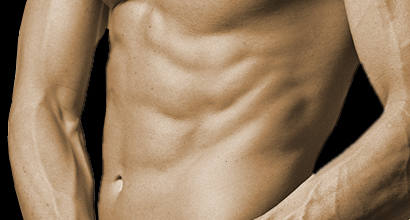(and How to Get It)
How can I best strengthen my core? Do I need a machine, or is low-tech better? Questions about cultivating “core power” are among the most popular inquiries I get as a trainer. We hear enough about the importance of core muscles, but few of us have enough information to formulate an effective workout to safely achieve the goals we have in mind. Our core strength is a key component of our overall strength and fitness development. In today’s article, let’s look at the three anatomical layers of the core as well as different core workout options you can use to train for optimal core power results.
“Technical” Disclaimer (for the serious enthusiasts and experts out there)
Before I begin, there are two points I need to make clear, as there are many fitness enthusiasts who feel there are “laws” that cannot be broken regarding exercise – especially core training. This article is not going to be a “Drawing In” (popularized by Paul Chek) versus “Bracing” (popularized by Stuart McGill) argument. Both thought processes have their place in program design, and entire articles (if not books) could be written regarding the pros and cons of each for various health club members. Second, regarding the three layers of the core, some fitness professionals have been taught the third layer or outer unit are involved with movement sling patterns involving lots of muscles (e.g. Deep Longitutional, Anterior Oblique, Posterior Oblique and Lateral) that can be trained differently than traditional abdominal training. While this is true, for the purpose of this article, the third layer will discuss the outer core muscles of the midsection that can be seen in lean people (Internal and External Obliques, Rectus Abdominus and Erector Spinae) and exercises that train them because so many fitness enthusiasts and professionals want to use exercises to target these muscles.

Layer 1: Position Sense or Deep Segmental Muscles
The Premier Personal Training Solutions course was the first one that I saw that discussed these muscles. Prior to that, most fitness professionals usually learned about just the Layer 2 (Inner Unit) and Layer 3 (Outer Unit) muscles and were rarely educated on these three important muscles of the first layer. The layer 1 muscles consist of the Rotatores, Intertransversarii and Interspinalis found on the spine. These muscles are trained by performing Stability Ball seated leg raise progressions and balancing progressions (Kneeling 4-point, 3-point and 2-point). The pros of these exercises are they can be fun and challenging to do. The cons are people won’t “feel” the core muscles being trained, which means these exercises are often questioned or not done at all.
Layer 2: The Inner Unit Muscles
The inner unit consists of the Transverse Abdominis, Diaphram, Multifidi and Pelvic Floor muscles. Exercises that train them include dead bug progressions, heel touch progressions, static exercises like planks and side planks, dynamic stability exercises like ab roll outs, plank/band row, side plank/band row and Pilates variations. The layer 2 muscles along with layer 1 should be trained first with people new to exercise and/or should be trained more often with experienced fitness enthusiasts, who often only train layer 3.
Important Point on Layer 2 Training: It can be helpful for many women to focus on Layer 2 exercises for two reasons. First, they will help with realigning the hips to allow the deep inner unit muscles to activate better. Some women experience incontinence (having a hard time controlling urination), and if the hips are misaligned (usually as a posterior pelvic tilt or a noticeable arch in the low back), this issue isn’t addressed. Second, as a result of childbirth (especially if a C-Section was done), the muscles of the core often need to be “re-educated.” The exercises included in this section do a good job of facilitating this process.
Layer 3: The “Mirror” Abdominal Muscles
This layer includes the Rectus Abdominus, Internal and External Obliques and Erector Spinae muscles. I have found through research and application that these muscles can be trained in prone/supine/side-lying positions as well as standing positions and include the flexion/extension, rotation and lateral movements. You can even include hanging exercises.
Important Point on Layer 3 Training: Some well-known fitness presenters like Mike Boyle suggest that abdominal flexion exercises like crunch variations should be avoided and replaced with ab rollout variations. He also suggests that rotational movements should be avoided and replaced with renegade row variations or functional trainer machine push/pull exercises. These thoughts are based off the anatomy and biomechanics of the core and spine. On the other extreme, fitness experts like Charles Poliquin feel abdominals are made in the kitchen and don’t need specific training as long as heavy multi-joint exercises like squats and deadlifts are performed training the core muscles as stabilizers. While I agree with the sense behind both approaches, I have found many health club members are committed to traditional abdominal exercises. In keeping with that interest, I recommend that fitness enthusiasts of all levels consider consulting fitness professionals to teach them how to do these exercises safely and correctly and to progress/regress them accordingly.
Core Program Design: Putting It All Together
For people beginning exercise, I will either suggest they alternate between Layer 1 and 2 exercises, or I will put exercises from both into the same workout starting with Layer 1 and then the Layer 2. Pilates can also be integrated in once or twice each week. An example program might look like this:
- Workout 1: A Layer 1 exercise like Stability Ball 2-point kneel for time
- Workout 2: Layer 2 exercises like Dead Bug and side planks with band pulls
- Workout 3: A Pilates Reformer class.
For more experienced members, I suggest doing the beginning program above 1-2 days/week and dividing Layer 3 into prone/supine stable exercises (on the floor), prone/supine exercises on unstable equipment (BOSU or Stability Ball), and standing exercises (functional trainer machine chop or rotation patterns). Modified strongman exercises can even be used if you want to focus on bracing a bit more, and those exercises can include 1-arm or 2-arm dumbbell or kettlebell farmers walks for time. A weekly workout might look like this:
- Workout 1: A Layer 1 exercise like Stability Ball 2-point kneel for time
- Workout 2: Layer 2 exercises like plank and side planks with band pulls
- Workout 3: Layer 3 exercises like BOSU crunches, side crunches and prone back extensions
- Workout 4: Layer 3 exercises like standing functional trainer machine cable cross chops and reverse chops
- Workout 5: Modified strongman exercises like dumbbell or kettlebell 1-arm farmers walk for time
As you can see from the examples above, there are a wide array of different core exercises to choose from based on your goals, experience and ability. As long as you consider injury/surgery history and proper form, you can’t go wrong with many of the options listed above. Don’t hesitate to talk to a fitness professional at your club for additional direction and assistance.
What exercises or classes have you tried for core strengthening? Share your experience and questions. Thanks for reading, everyone.
Written by Corey Grenz, Metabolic Specialist and Personal Trainer
This article is not intended for the treatment or prevention of disease, nor as a substitute for medical treatment, nor as an alternative to medical advice. Use of recommendations in this and other articles is at the choice and risk of the reader.



